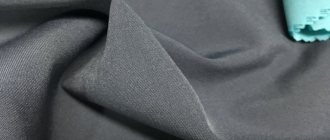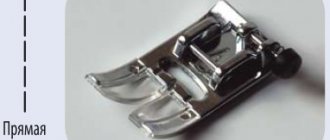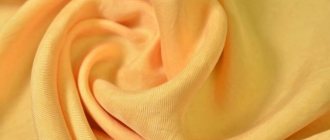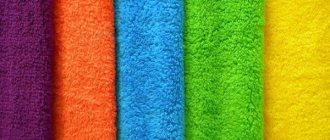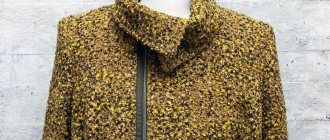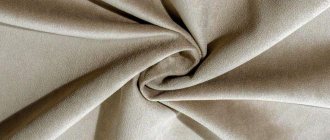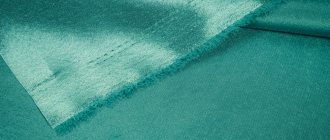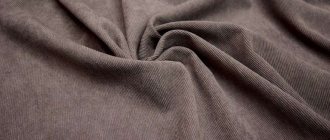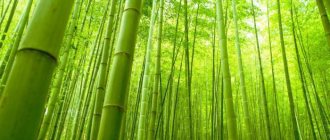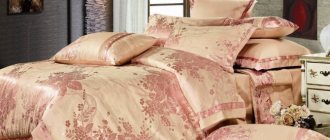Flock (from the English “flock” - “shred”) is a fabric that is often used in furniture production for upholstery due to its affordable price and quality indicators. Many consumers are interested in knowing what flock fabric is, the properties, pros and cons of the material.
A little history
"Flock" means "lint". This word is of English origin and is translated as “tuft”, “bun”, “comb”, “fluff”.
The so-called flocking method was developed in China many centuries ago. Its essence is as follows: production waste (scraps of wool or cotton) is glued onto a base fabric.
At the beginning of the 20th century, the method spread throughout the world. Modern light industry technologies make it possible to use flocking to create different types of material from a wide range of raw materials, both artificial and natural.
Minuses
- Gets dusty quickly . Like any pile, it quickly becomes electrified and well “magnetizes” dust and suspended particles in the air, which can cause allergy attacks in people suffering from this disease.
- Deteriorates when exposed to reagents . Precipitates may contain acid. In parks and squares, the soil is fed with fertilizers, for example, potassium chloride. In addition, in the Russian Federation, to remove snow and ice from the surface of roads, they are sprinkled with a mixture of sodium and calcium chloride. Therefore, it is not recommended to wear flock shoes in rainy and snowy weather, when these reagents may come into contact with them.
- Static electricity . Strong electrification can cause trouble in cold weather, when a sensitive discharge is possible when a person’s hands touch various objects.
- Formaldehyde release . In the production of flock in China, cheap technical glue containing formaldehyde is often used, which, when released, can be harmful to health, especially for the elderly and children. To eliminate this drawback, some manufacturers use an environmentally friendly acrylic adhesive layer or, after drying, process the material for a long time to get rid of dangerous compounds.
- Difficulties in care . It is not recommended to use alcohol-containing solvents or products containing chemically active elements, such as acetone or gasoline, when cleaning. They can damage the adhesive layer, then the fibers will fall out and the lower layer of the surface of the product will be exposed. For the same reason, the outer surface should not be rubbed too hard.
Features of fabric production
The canvas consists of two parts. The first is a dense load-bearing base, the second is the pile.
The production process takes place in three stages.
Pile cutting
The following methods for obtaining the top layer are popular:
- grinding raw materials into fractions;
- cutting threads laid into bundles.
In both cases, the output is a soft, uniform fiber.
Coloring
This stage sometimes precedes slicing.
Flock lends itself well to painting in any color. In this regard, velor is inferior to it.
The use of high-quality dyes adds advantages to the fabric such as:
- moisture resistance;
- immunity to ultraviolet radiation;
- resistance to some chemical compounds.
Fabric processing
At the last stage, the two components are combined into one. Processing is carried out in three substages:
- Pile activation. To ensure that the scraps lie flat on the base layer, they are electrified by charging them with special equipment.
- Spraying. The base is covered with a special glue, then sprinkled with a layer of pile.
- Consolidation. The resulting fabric is treated with a special compound. This makes it uniform, attractive and more functional.
What standards are used in production? What do they take into account?
When producing flock, manufacturers are guided by the requirements of GOST 24220-80: “Furniture fabrics. General technical conditions". The standards regulate the resistance of the material to abrasion. For example, 315 g/m2 flock must withstand a minimum of 4,500 cycles before it develops a hole. In fact, this figure is much higher.
Clause 3 of GOST 24220-80 also establishes resistance to abrasion along the plane to be at least 800 cycles. Flock has an indicator in the range from one to four thousand cycles.
Flocking technology involves the presence of formaldehyde. GOST 25617-83. “Fabrics and products made of linen, semi-linen, cotton and mixed. Chemical Test Methods" regulates their permissible level. Research shows that for flock this figure is several times less than the permissible values, which indicates the safety of the material.
Composition variations
There are the following types of material, depending on the constituent raw materials. Flock happens:
- Mixed. The most popular and versatile fabric. It consists of a nylon pile and a cotton base mixed with synthetics (polyester, polyamide or viscose). The ratio is 35% to 65%.
- Cotton. It has a low price, but also low performance indicators. Therefore, the main functions of using such a canvas are decorative and short-term purposes.
- Polyamide. Popular in furniture production. The only weakness is its lack of resistance to ultraviolet radiation.
- Polyester. The properties of such flock are similar to polyamide. Distinctive features: resistance to fading, but difficult to paint in any color except black.
- Viscose. The main disadvantage is wrinkleability.
- Acetate. It has the same disadvantages as viscose. Used to produce artificial fur.
- Polypropylene. It has low performance indicators and is convenient for large-scale production.
What kind of material is flock?
This is the name of a canvas that has a one-sided velvety surface with thick fibers glued to a fabric base . The term flock comes from the English word for fluff. It is widely used primarily as furniture upholstery with excellent characteristics and an affordable price.
Important! The fabric has a soft, fleecy outer layer that is very pleasant to the tactile sensation. Furniture upholstered in flock looks stylish and respectable.
How did he appear?
Even in ancient China, cut textile fibers were placed on resin-coated material, decorating the fabric with designs. The method that is used now was invented in the USA in the middle of the 20th century in order to find a use for the accumulated waste from the production of textile fabrics.
How is it made?
Modern flock production is called electroflocking, it consists of several stages:
- a thin layer of adhesive is applied to the woven base;
- fluff is ejected from the top of the hopper. Due to electrification, they fall on the material in a strictly vertical position and are located very close to each other, evenly covering the resulting fabric;
- This is followed by the process of painting (sometimes it precedes the entire technological chain) and processing of the material with special compounds that improve performance characteristics and add shine to the pile.
Variety of fabrics
Modern flock is quite variable. The material can be soft or hard, different in thickness, thickness of the top layer, etc. The determining role in this is played by the pile, or more precisely:
- thickness;
- length;
- density (frequency of spraying).
Color options are not limited.
Nowadays, new unusual flock fabrics have appeared. Among them:
- Aramid. It is distinguished exclusively by yellow color. The application is highly specific.
- Carbon fiber flock. It is characterized by absolute non-flammability (without special processing required for other types). More expensive than other flock fabrics.
Types and their properties
The area of its application depends on the type of fabric. Flock upholstery is available in different pile lengths and different bases. In this regard, the following are highlighted:
- flock on matting is a fleecy material with a matting base. Such upholstery fabrics are produced with selective flocking, since the matting itself is considered a full-fledged material for upholstering furniture;
- flock on flock - an option where the fleecy surface is applied in two layers, which is why the fabric turns out voluminous;
- Anti-claw flock is a dense and mechanically resistant material that can withstand the pressure of pets. One of the most durable and popular furniture flocks;
- Teflon flock - known as courtesan. Comes with Teflon coating, which increases resistance to stains and makes cleaning easier;
- flock IQ is essentially the same anti-vandal fabric or anti-claw. Flock IQ has additional impregnations that increase the strength of the material and increase its resistance to dirt;
- flock on organza is a transparent material with partial flocking that forms patterns. Suitable for curtains and drapes;
- Alcantara or car flock is an expensive type used when reupholstering a car. Similar to velor or suede fabrics. Flock fabric under natural Alcantara is cheaper and pleases with a rich palette - white, gray, black flock, as well as brown and beige flock are on sale.
Advantages of flock
Among the several advantages of this material:
- High density, and due to this - strength. Flock products are difficult to tear and damage in any way.
- Water resistance. The fabric literally repels moisture.
- Breathability. Maximum characteristic of mixed flock.
- Wear resistance. The fabric does not wear out, does not stretch, does not pill, and does not shrink.
- Heat resistance. Temperature changes are not dangerous for the material.
- Softness. Flock products are warm and pleasant to the touch.
- Attractive appearance.
- Easy to maintain and clean.
- Wide possibilities in coloring (the advantage does not apply to aramid and polyester varieties).
Conclusion
Having analyzed the advantages and disadvantages of flock shoes, it is not difficult to understand the reason for its growing popularity. Attracted, first of all, by visual and tactile respectability , similar to velor, at a lower commodity cost. Such a purchase will delight the consumer with its brightness and preservation of the original shape and color throughout the entire period of wear. But it requires careful handling and specific care. Experts recommend not to neglect simple tips:
- If necessary, clean the surface of the shoe with a vacuum cleaner or a soft, but always dry brush.
- Remove the stain immediately; 3 minutes after applying the soap solution, wipe it off with light movements of a soft brush or sponge.
- Treat the stains, moving from the circumference to the middle.
- You should not scrape off dried dirt, as you may accidentally remove lint and a bald spot will appear in its place.
- Pre-soak dried stains.
- Follow the manufacturer's recommendations for caring for your specific pair.
- Due to the negative effects of reagents, increased care is required when wearing shoes in winter.
– I saw spring flock ankle boots in the store. I really liked the look, sewn neatly, but the material itself confuses me. I’ve never owned flock shoes - this is the first time I’ve heard of this and now I’m afraid that the ankle boots may fall apart after the first wear. Is it possible to buy flock shoes, what are their pros and cons? Does she need special care?
Flock is a dense non-woven material. There is a synthetic fleecy surface on a synthetic or cotton base, due to which the flock resembles suede and looks quite solid. The material is variable - it can be soft and harder, with piles of different lengths and thicknesses. Dense flock with low pile is used for sewing shoes.
Flock is becoming an increasingly popular shoe material because it has a number of characteristic advantages:
- Water resistance. Due to the specific coating, moisture collects in drops and rolls off the surface without getting inside. This is especially important for spring and autumn shoes.
- Breathability. Despite the fact that the material is synthetic, the legs are comfortable in it due to normal air circulation.
- Durability and durability when worn. The material is practically not subject to deformation and stretching. In addition, it does not fade and retains its original color even with constant wear. Flock is resistant to temperature changes, so you can safely even buy winter shoes made from this material - it will not become stiff or crack.
- Appearance. Flock not only looks elegant, but can also be dyed in a huge range of colors.
- Convenience. Even the densest flock sits comfortably on the foot, it is soft enough and does not need to be worn in.
- Price. Having all the qualities of natural materials, flock costs noticeably less.
But when purchasing flock shoes, we must not forget about the disadvantages:
- Due to its good electrification, the material attracts dust, wool, and dirt.
- Does not tolerate reagents well. The latter can corrode the material.
Caring for flock shoes is not difficult, but it has its own characteristics. In order for the material to attract dust less, it should be treated with an antistatic agent. Under no circumstances should the material be cleaned with alcohol-containing liquids or aggressive agents such as gasoline. It is also not recommended to use a shoe brush with stiff bristles.
Shoes can be cleaned with a damp cloth, and if they are very dirty, use a soap solution.
Below you can familiarize yourself with the characteristics and photographs of the material in more detail.
Application area
Flock is used to create and sew:
- upholstery for furniture (chairs, sofas, couches, etc.);
- home textiles for windows, curtains, drapes;
- toys and small decorative items and household goods;
- packaging and gift wrapping;
- clothes (mainly skirts and dresses);
- decoration details;
- patches on shoes, boots, boots.
Which upholstery to choose?
Which fabric to choose flock or velor for a sofa depends on several factors. When choosing, take into account the purpose of the room where the furniture will be located. If this is an office or living room, then it is better to purchase velor, which will emphasize the furnishings and taste of the home owners, and will add elegance and beauty to the interior. The upholstery fits perfectly into the classic style.
If the sofa is placed, for example, in a children's room or in a house where there are animals, then the best option is democratic flock. The upholstery may need to be changed frequently. Flock is suitable for styles such as high-tech, minimalism, loft.
Care instructions
The fabric is not considered finicky to use. However, each type has certain features that are worth considering. When purchasing a flock item, you need to study the care instructions and follow them.
General wishes are:
- Dry cleaning is not recommended.
- Washing such things is also contraindicated.
- Cleaning with alcohol- and gasoline-containing solutions, solvents, oils and other reagents is prohibited.
- To get rid of dirt, just walk over a fresh stain with a water-based soap solution.
- It is recommended to vacuum flock furniture periodically.
- If there is a need to iron clothes made from such fabric, this should be done from the inside out in the “synthetic” mode.
Reviews
Elena:
10 years ago we ordered a sofa. We chose flock upholstery, made in Canada, we are very pleased, during this time the material has remained virtually unchanged. We vacuum about once a month and that’s it. The pile is practically not wrinkled, there are no bald spots.
Marina:
In our kitchen we have a corner sofa with flock upholstery. I really like it: I washed the stains with a soap solution (diluted with dishwashing detergent) and a sponge. The child spilled the compote, they wiped it off so quickly with a towel, it didn’t even have time to soak in!
Sergey:
We bought upholstered furniture. Our little child drew on the chair with felt-tip pens, my wife immediately wiped it off with baby wipes and there was no trace left!
Elena:
We chose furniture so that the cat could not scratch. The consultant recommended flock. Well, it’s been holding on for six months already, the cat can’t get her claws in and has lost interest, until we’re disappointed.
